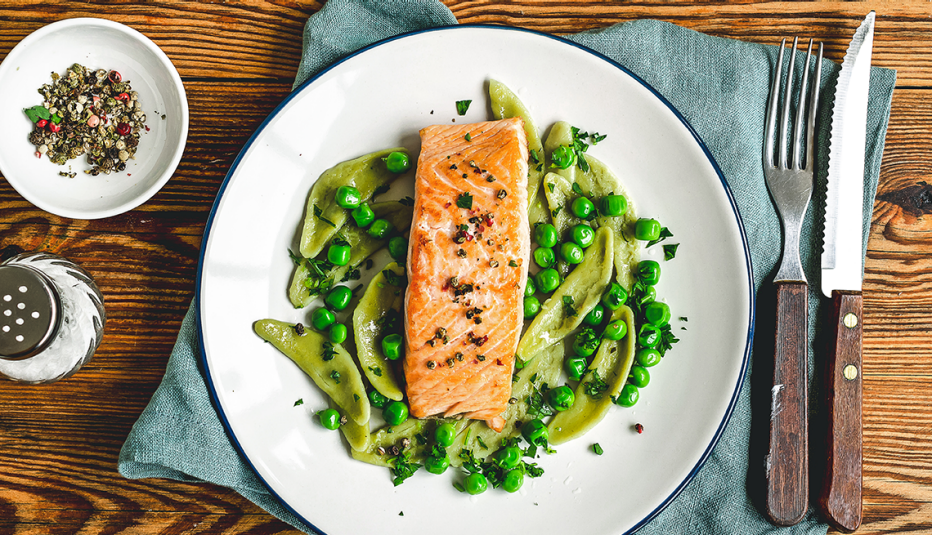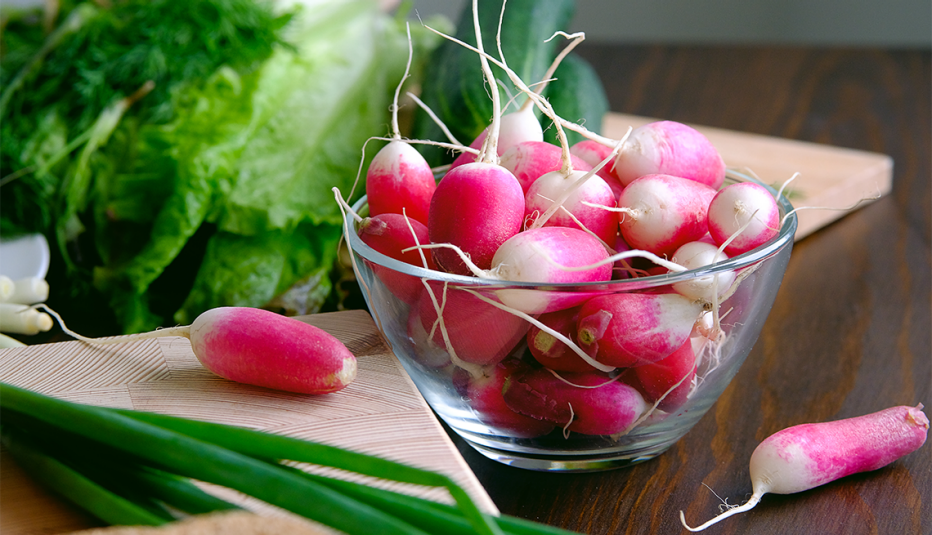AARP Hearing Center


The cold winter months are over and spring is finally here. This new season ushers in a verdant array of fresh produce that pops on the plate and your palate. To make sure you get the most of new bounty, three celebrated chefs shared their ideas on how to prepare their favorite springtime ingredients.
1. Ramps
With a flavor like a leek crossed with garlic, this versatile wild allium plant is a great springtime substitute for onions and their relatives, thanks to its rich flavor. Jenner Tomaska, executive chef and owner of Michelin-starred restaurant Esmé in Chicago, likes pickling the bulbs in a quick brine of equal parts water and vinegar with salt and sugar to taste. He’ll put them on tacos for a pop of acid, or he’ll simply finely chop ramp leaves to add to a salad. For a breakfast preparation, Top Chef star Bryan Voltaggio, chef of Thacher & Rye and Family Meal in Frederick, Maryland, will slip diced ramps into scrambled eggs, a frittata, scones or biscuits.


2. New potatoes
The first potatoes of the year of any variety, smaller and sweeter than those harvested later in the season, are called new potatoes. “I love taking potatoes and treating them like Puerto Rican mofongo [a dish made with fried and mashed plantains],” says Matt Baker, chef of the Michelin-starred Gravitas in Washington, D.C. He suggests blanching the small spuds quickly with their skins on and smashing them with a fork while they are still warm. Deep-fry the potatoes to create a crispy outside, while maintaining a creamy interior. Another great use for the tiny tubers is to steam or boil them until they’re soft to use as the base of a tender potato salad.
3. Morel mushrooms
With a cultlike following amongst chefs, these rare wild mushrooms are one of the first ingredients foragers seek in the spring. Luckily you can find these fresh shrooms at many farmers’ markets and in specialty grocery stores. With a meaty texture and deep umami notes, they work well in a variety of preparations. Voltaggio likes to sauté them to put on top of pizzas or to toss with pasta along with spring peas and either prosciutto or country ham. For a heartier preparation, he includes them in chicken and dumplings, along with other spring vegetables, such as English peas and baby carrots.


4. Radishes
According to Tomaska, radishes only need two things: salt and fat (such as butter or olive oil). This approach works well whether the cruciferous vegetables are being served raw or roasted, the two most common cooking techniques applied. If serving them raw, coat one side with butter and sprinkle them with sea salt, or roast them with the same ingredients. For a more adventurous preparation, Tomaska suggests throwing the ruby red bulbs on the grill since their peppery notes are a natural pairing with rich meats, whether that’s sausage or a steak.


































































More From AARP
Cleaning Tips to Make Your Oven and Stovetop Sparkle
Combine a bit of elbow grease with DIY solutions and commercial products
7 Ways to Get Closer to a Zero-Waste Lifestyle
Small changes can help to shrink your carbon footprint
Weird Cooking and Cleaning Hacks That Really Work
Some might sound strange, but they’re worth trying